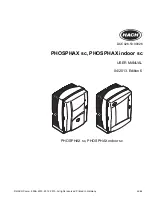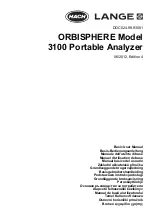
Dakota Ultrasonics
18
Note:
A sample or location on the test piece should be used as close to the
maximum thickness of the test range to minimize error.
2) Apply a drop of couplant on the transducer and place the transducer in
steady contact with the sample or actual test material. Be sure that the
reading is stable and the repeatability indicator in the top left corner of the
display is fully lit and stable.
3) Press the
key to enter the calibration edit screen displaying the current
measurement value.
4) Use the
keys to scroll to the known thickness value.
Note:
The longer the keys are pressed and held, the faster the value will
increment/decrement.
Note:
Pressing the
key prior to pressing the
key will abort the cal
routine without saving any changes.
5) Once the known thickness value is being displayed, press the
key to
display the calculated material velocity edit screen.
Note:
The calculated velocity can be edited, if needed, by pressing the
keys to scroll and edit the velocity value.
6) Press the
key to set the calculated material velocity and return to the
measurement screen.
CHECK YOUR CALIBRATION!
Place the transducer back on the calibration
point and verify the thickness. If the thickness is not correct, repeat the steps
above.
www.calcert.com
1.888.610.7664
0
5
10
15
20
25
30
















































